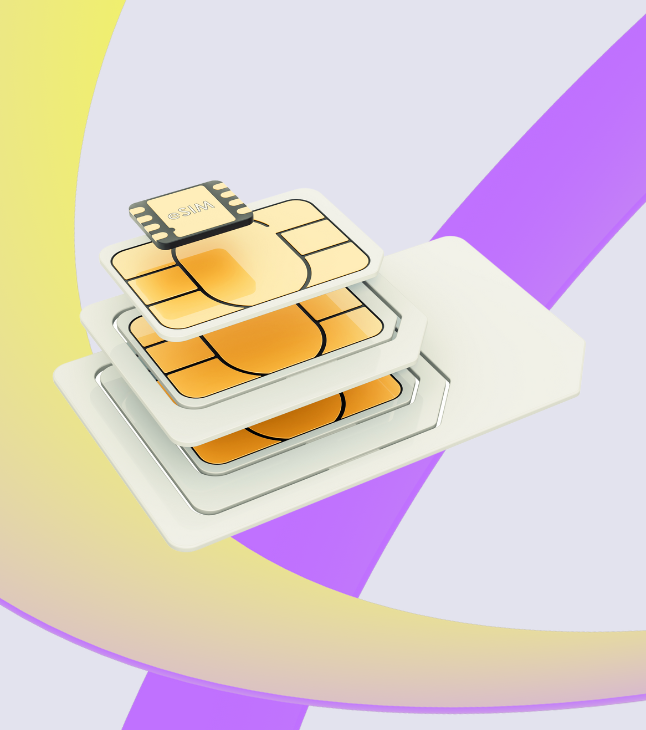It is easy to imagine the difficulty of manually managing a vast fleet of IoT devices, especially mobile ones. Mobile Device Management (MDM) refers to solving this difficulty by centralizing monitoring, securing, and managing smart mobile devices.
In this blog, we will cover what is a Mobile Device Management solution and how it can help your business.
Introduction to Mobile Device Management (MDM)
A Mobile Device Management (MDM) solution allows businesses to manage their mobile devices through a central interface. It is not productive to manage each device separately, as mobile devices can operate anywhere. An MDM solution improves the accessibility to IoT solutions without direct access to the device.
What is an MDM solution?
A Mobile Device Management solution allows the IT administrator to manage mobile devices for their organization from one central location. Therefore, they no longer need to manage each device separately and do it without possessing the device.
These solutions utilize application programming interfaces (APIs) that can directly communicate with a mobile device. The platform sends specific instructions such as policy changes, app restrictions, security configurations, and software updates to the device through these APIs. The IT administrator defines these policies and other instructions on their chosen MDM solution.
MDM managing the future
Let us start by getting the usual keywords out of the way. We all know that Mobile Device Management (MDM) is about monitoring, securing, and managing your employees’ devices.
But when we toss the sales talk out the window, what does that mean? Why would a company consider getting a Mobile Device Management solution? To understand that, we need to understand what an MDM solution can do and why those keywords keep on popping up everywhere.
MDM and its importance in your company
Bringing it back to the keywords that are often used to sell MDM, let’s take a further look into why MDM is on the rise and where it fits in our IoT world. Even before the global pandemic, mobility had become a lifestyle, but it can no longer be denied. Home office and working remotely have become the norm instead of the outlier. In the IT industry, job offers without a home office are not being looked at anymore, and other industries are following. All of this leads to a need to manage all these mobile devices with company-sensitive information on them, without restricting the user and without creating unnecessary work for IT administrators.
Security of remotely distributed devices
We’ve all been there, our phone nowhere to be found when you leave the pub, to realize you’ve forgotten it earlier that evening when visiting the restroom. A security update pops up on your screen, but you’re listening to music; you click it away for later. Two weeks after, you still click that notification away every single time. With a private phone, your banking details, private messages, and pictures are an easy target for anyone with a bit of IT knowledge.
When we put this in a corporate context, in a world where working remotely on a company-owned laptop and having a company phone to be reachable on that contains both secret company information and access to your office through an app. A simple pin code, most likely your birthday, being the only barrier stopping someone from getting trivial data on your company. I wouldn’t trust myself with that responsibility; why should any company take that risk.
MDM solves all of this by allowing the IT administrator to roll out security updates to all corporate devices, lock or even fully reset a lost device, and enforce passwords that are more complicated than your child’s birthday. It enables you to control security company-wide without effort instead of putting that responsibility on the individual. Create security profiles for each department or team-based through company-wide templates in minutes, instead of spending hours writing passive-aggressive reminders to everyone to update their devices.
Management of remotely distributed devices
We’ve all remember that first day of work where we spend the entire day installing our brand-new laptop, figuring out which software we need from several different wiki pages. On top of the first day’s stress, you also have to have conversations with many colleagues from the IT support department almost every hour because you do not have the correct permissions or credentials to proceed.
The IT support department has an even worse time because every device is slightly different. For example, different security updates installed, different sets of applications, and different settings enabled, which they first need to figure out before being able to assist you with any issues you might have.
Imagine all these devices in an MDM solution instead; once the device has been added and assigned to the right group, the right applications and settings are prepared with no way of changing anything that would negatively influence your IT departments’ work. In addition, future issues are easier to solve because it is known what exactly has been installed on that device and which settings are enabled.
Monitoring of remotely distributed devices
Freeeway’s M2M SIM solution already enables data usage monitoring for IoT devices, which is definitely a good start to optimizing the industries’ IoT spending. Combining that with an MDM that takes care of devices that require traditional SIM cards and that could take care of the software side of IoT devices would cover your entire device management.
Monitoring means having a constant overview of your assets, acting on a moment’s notice, and having the necessary information at hand when the situation changes. Having all your devices divided into groups that fit your company structure and providing you with a constant overview of their status is what an MDM solution enables you to have.
How will MDM solve your biggest issues?
We’ve been transparent so far and will continue to be; administration and keeping oversight of your assets is what every company struggles with. It’s why we invest millions in software that can do it for us. Because it frees up our own time from repetitive tasks and manual monitoring to instead focus on more creative and exciting tasks. The software does a better job than we ever could because it does not get boring, nor does it need food; it can monitor everything 24/7 and keep an overview without complaining. This is what an MDM will do for your mobile devices:
- It will monitor all your devices for you, informing you of any changes or issues
- It will enforce your predefined security policies
- It will give you control over what applications can be used and which do not belong on a company device
- It will manage updates, software configurations, and company security regulations
- It will give you an overview of any device information you need
How MDM Works: The Key Components and Features
A Mobile Device Management solution can communicate with mobile devices through the internet using application programming interfaces (APIs). These remote instructions can help enforce device policy changes, security configs, app restrictions, and even over-the-air updates. Through an MDM solution, IT administrators can get real-time control of their mobile devices.
Some of the things that a Mobile Device Management platform can do are:
- Restrict/limit certain access to applications
- Whitelisted access as per the unique use case
- Different roles and access management to authorize applications
- Assigning password policies to strengthen security
- Defining policies and guidelines for mobile device usage
- Audit log to keep track of all the changes done through an MDM platform
The Benefits of MDM: Improved Security, Increased Efficiency, and Cost Savings
The goal of a Mobile Device Management system is to simplify how organizations can standardize the use of managed devices within best practices. Different features of MDM solutions can allow plenty of benefits to companies:
- Enhanced security practices
- Routine over-the-air updates for devices
- Identifying downtimes and mitigating them
- Utilizing mobile devices in a productive manner
- Controlling usage and access of apps
- Getting rid of manual time and cost investments
MDM vs. Mobile Application Management (MAM): Understanding the Differences
MAM is short for mobile application management. As the name suggests, MAM is about managing the enterprise application, not the mobile device. Here, the aim is to safeguard, manage, and control the enterprise applications like Salesforce, Outlook, Teams, etc.
As such, MAM is quite different compared to Mobile Device Management software. Here are some key differences:
- Level of control: MDM is about controlling and enterprise mobility management through the operating system layer. In contrast, MAM has a limited scope of controlling a particular enterprise application.
- Security: Having control of devices, MDM can offer additional security features to protect the device and applications. MAM has little control over securing the particular application and can leave the device prone to attacks.
- Scalable IoT applications: MDM can help enforce policies and updates over a fleet of devices to manage their operations. Compared with MAM, MDM’s abilities and control allow better scalability for IoT solutions.
Your MDM solution for Android Devices
Freeeway – a Vienna-based Austrian company, has had its feet firmly planted for many years already in the connectivity industry after successfully tackling the need for IoT device data management and monitoring both on the industry and consumer levels with solutions such as simHERO, Freeeway’s Connectivity Management Platform, and M2M SIM cards. We are here now to tackle the need for Mobile Device Management.
With software that focuses on what you need and leaves behind unnecessary features, Freeeway is there to make your Android device management an enjoyable experience instead of a chore. What your IT admins will be able to do is the following:
- Map out your structure and divide devices accordingly
- Create policies that define everything from device settings to which applications can be installed
- Move devices between your defined company structure at the flick of a switch, making this the easiest part of your employees switching departments
- Create custom password policies
- Keep a log that tracks all changes happening within the MDM software
- Go as far as to manage the configurations of individual apps. Choose which website is shown when the device browser is opened and block YouTube to avoid unexpected data charges.
Summarized in one sentence, simplifying the management of your devices, no matter the amount. But, of course, all of this is for a fair industry price that you pay for what you need to make it even better.
Get live free demo of the MDM solution for Android devices
If you are interested in seeing the live version of Freeeway’s Mobile Device Management Solution, fill out the contact form below. We will schedule a demo call as soon as possible
Your form entry has been saved and a unique link has been created which you can access to resume this form.
Enter your email address to receive the link via email. Alternatively, you can copy and save the link below.
Please note, this link should not be shared and will expire in 30 days, afterwards your form entry will be deleted.




